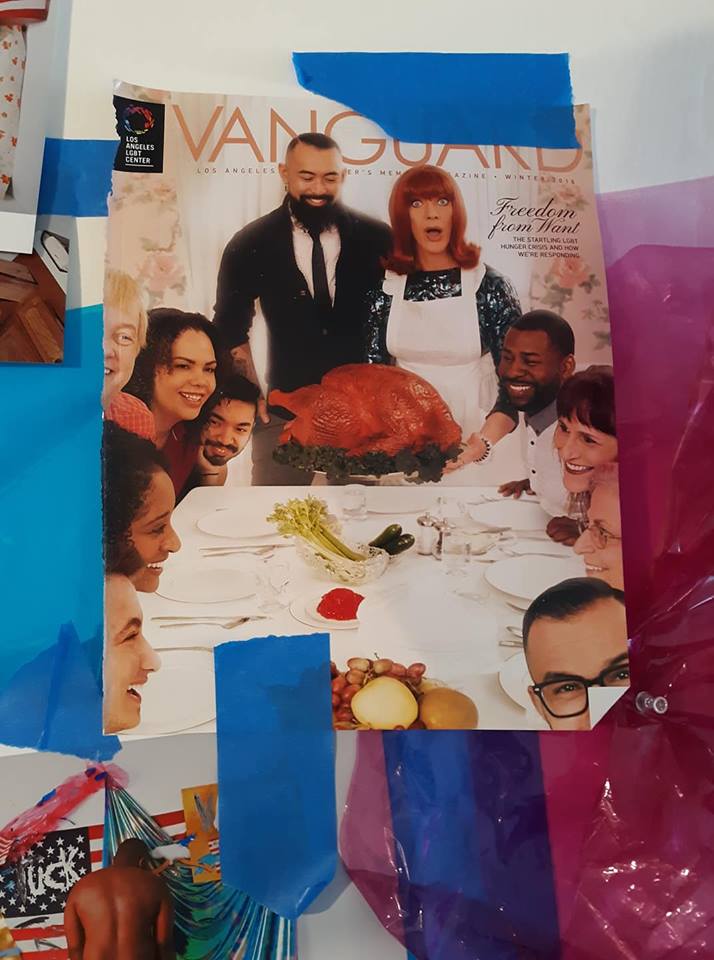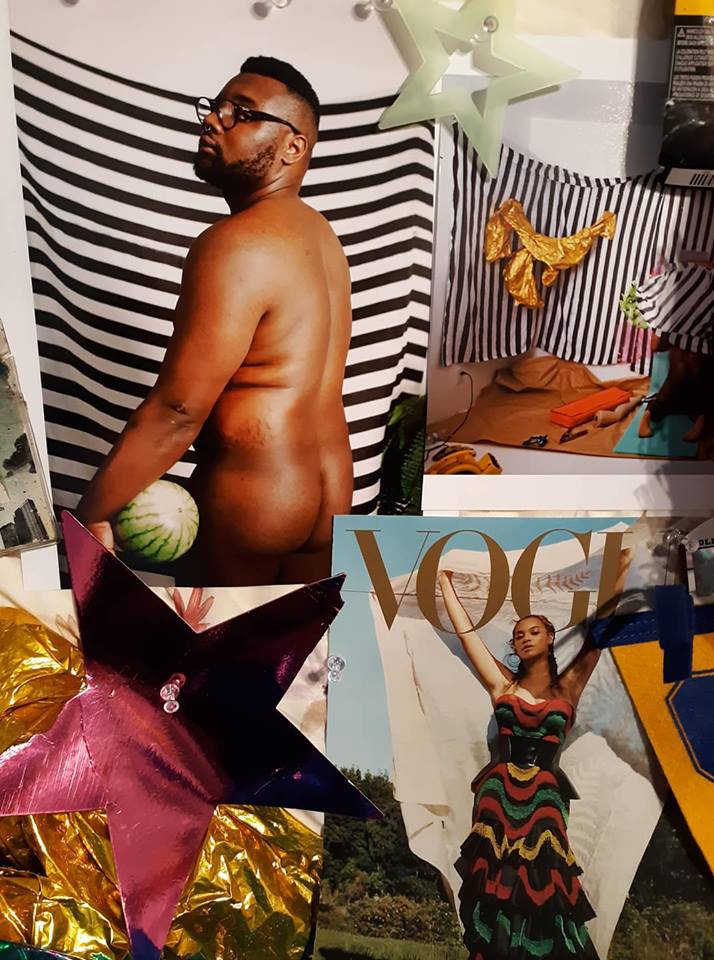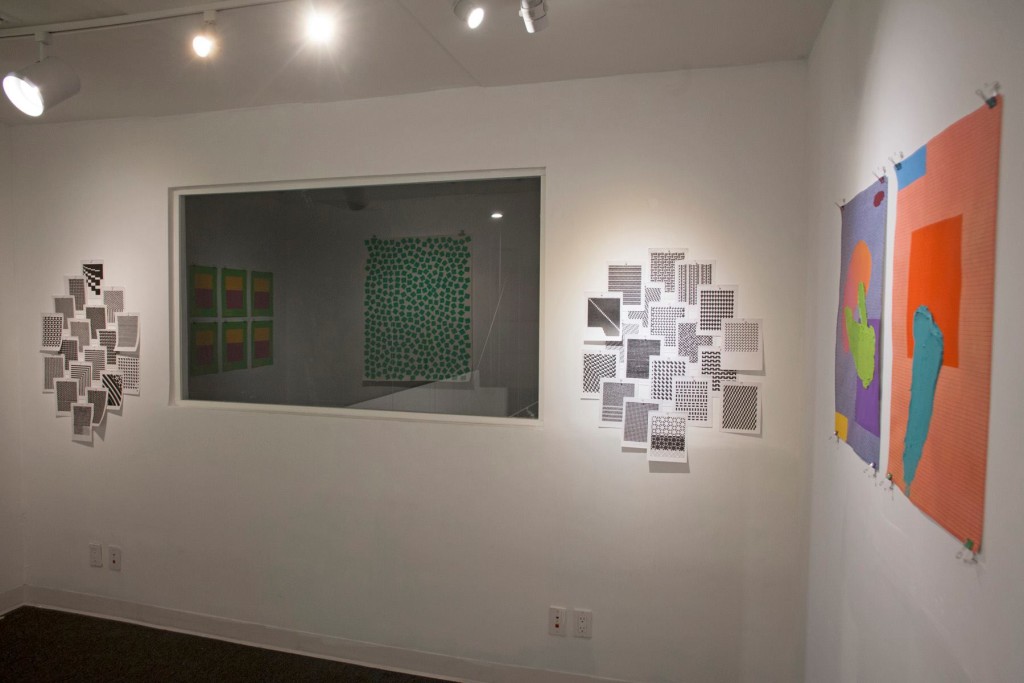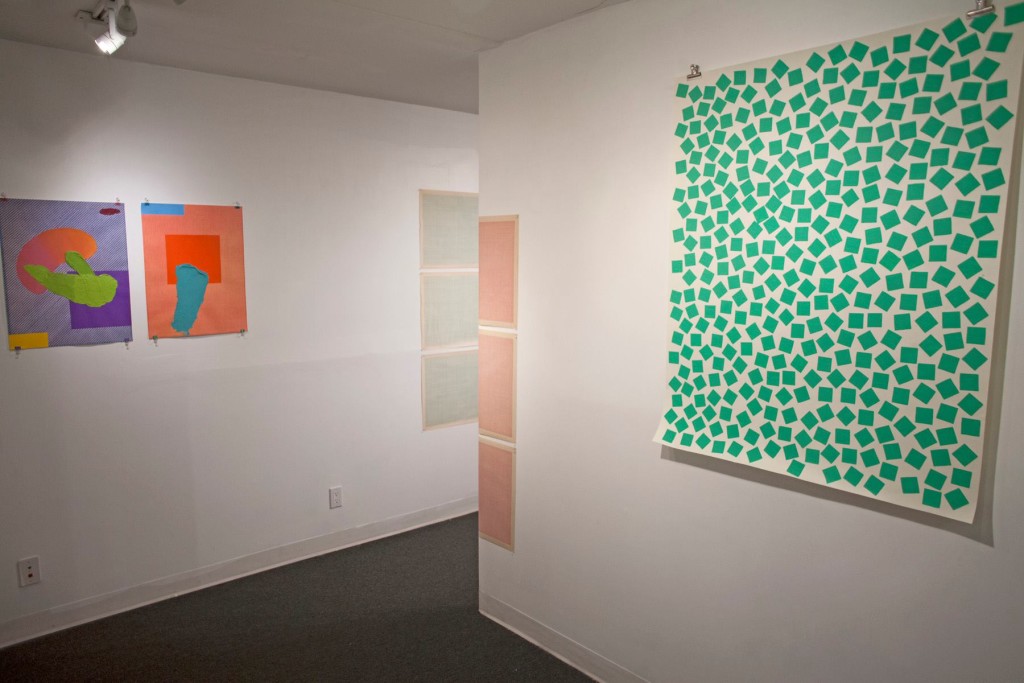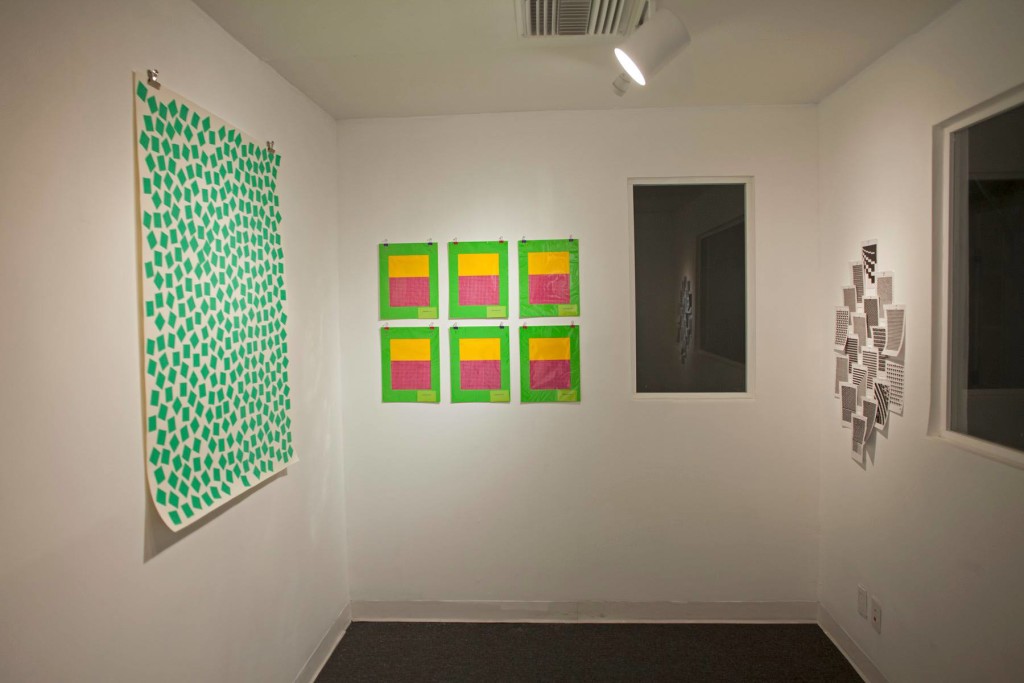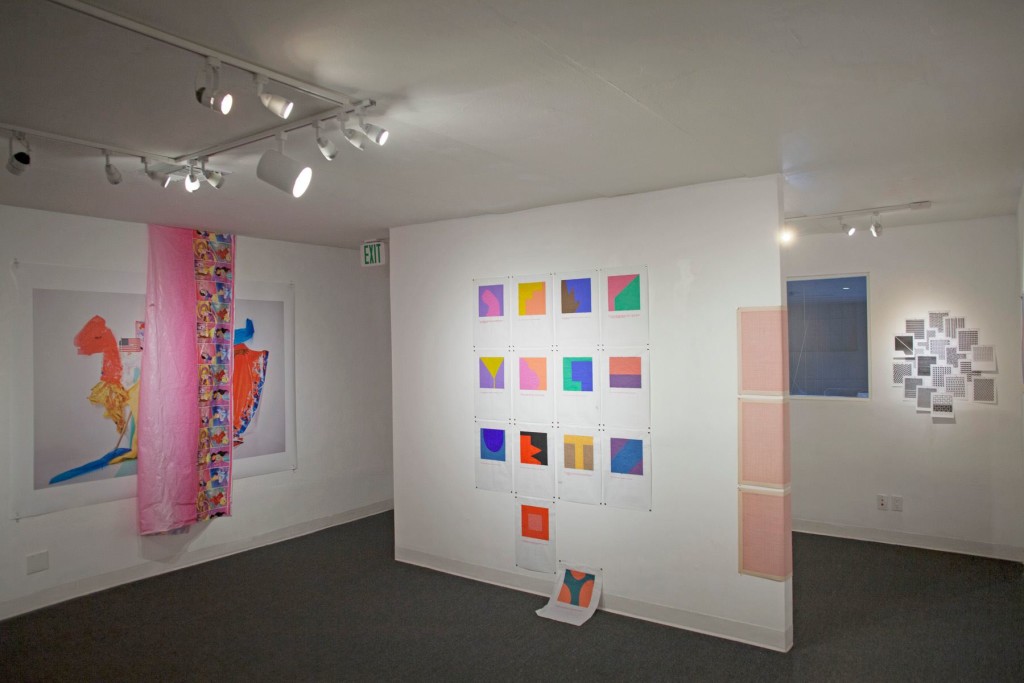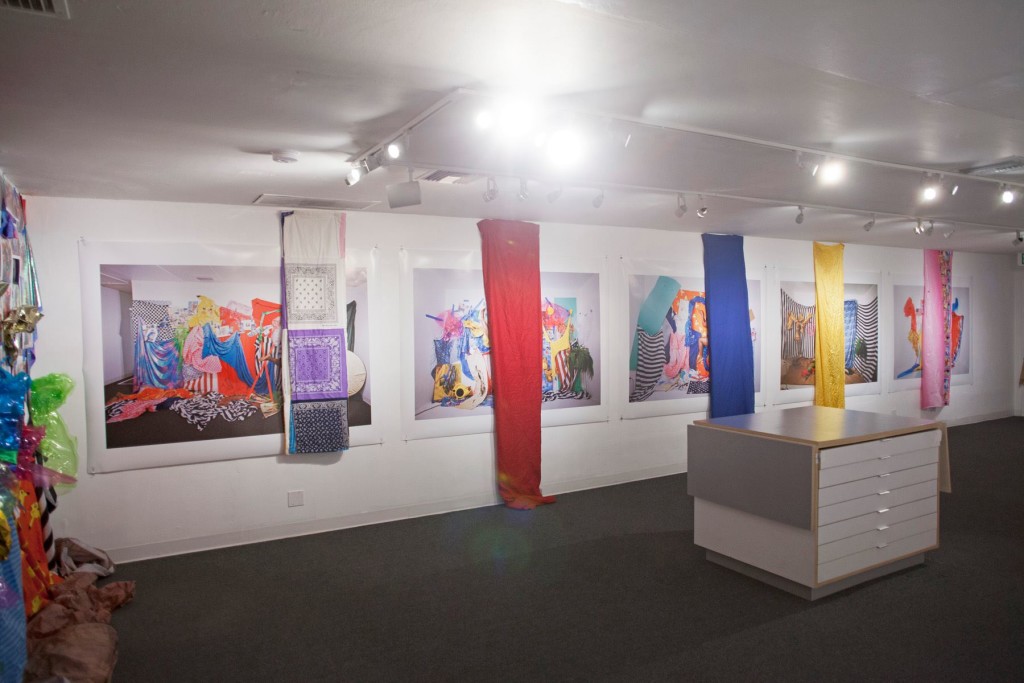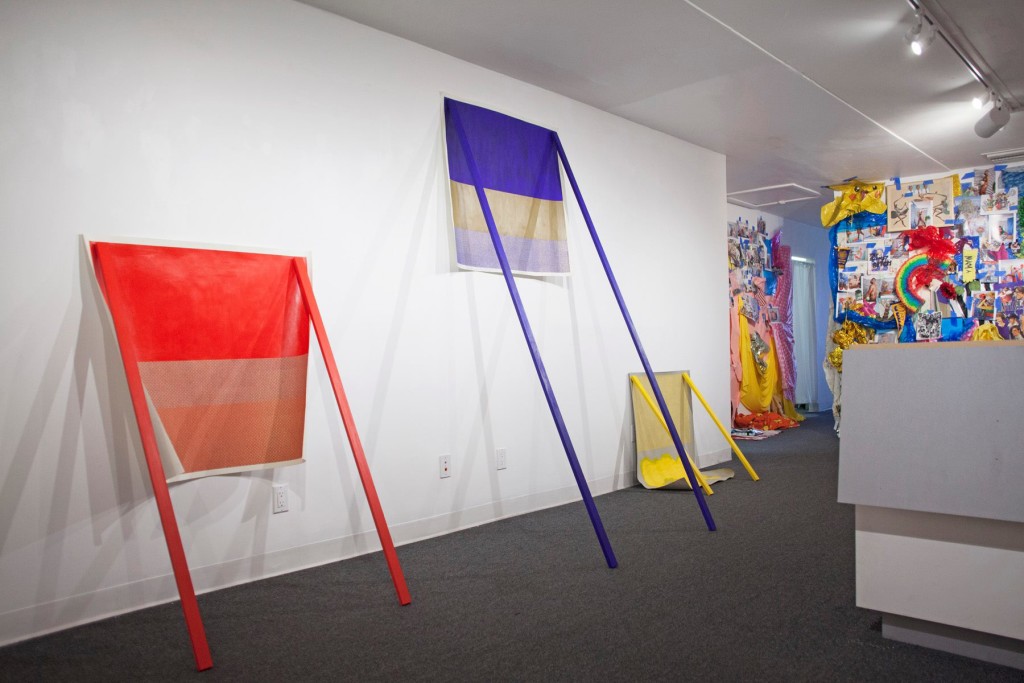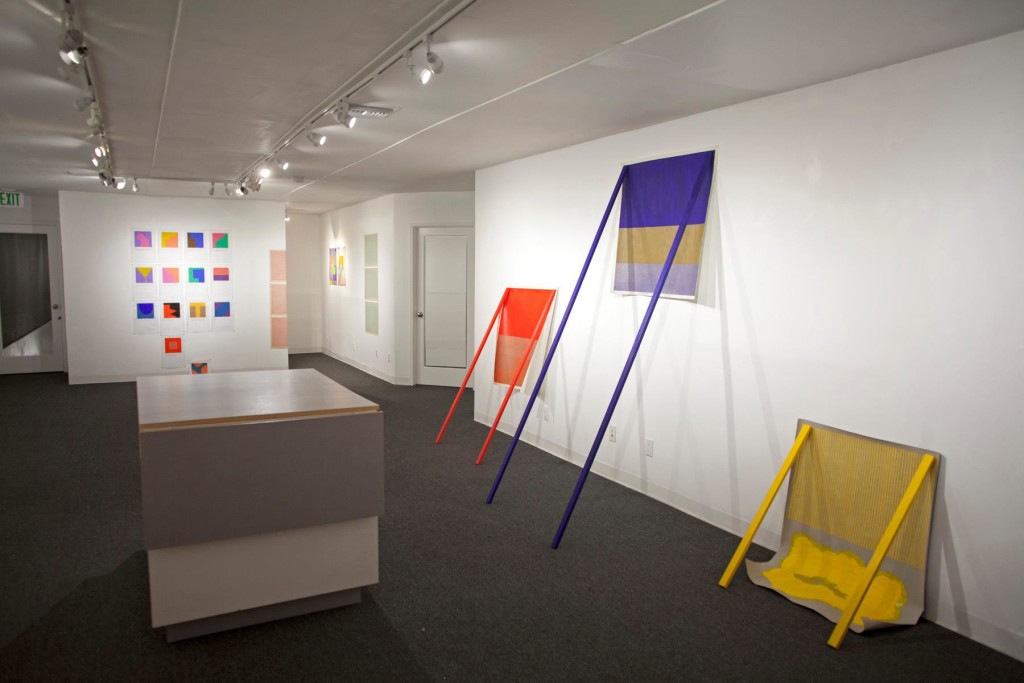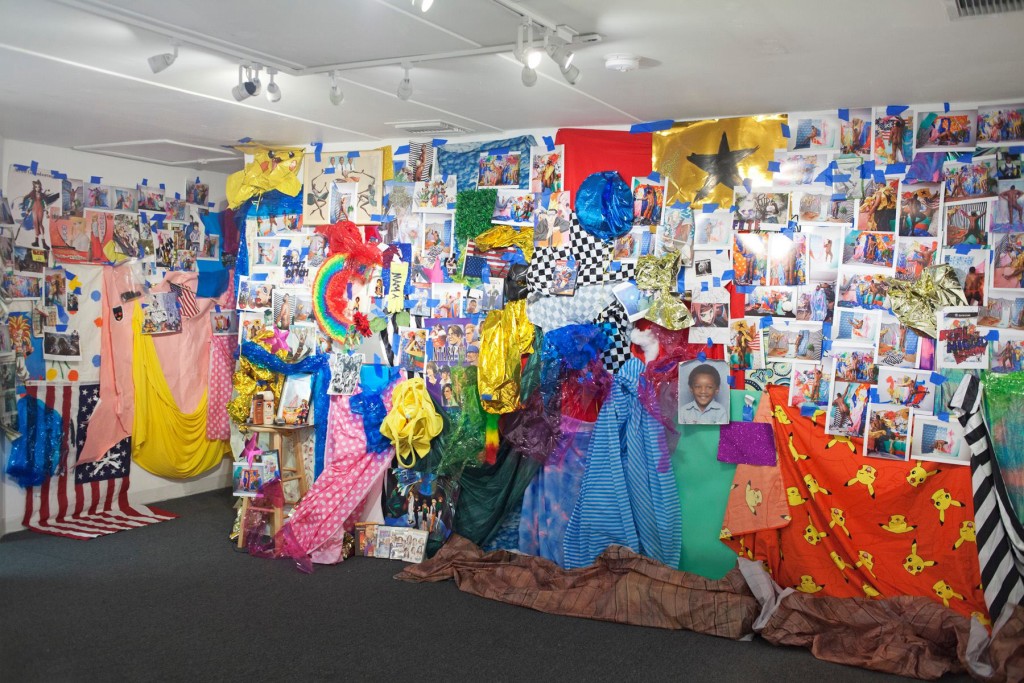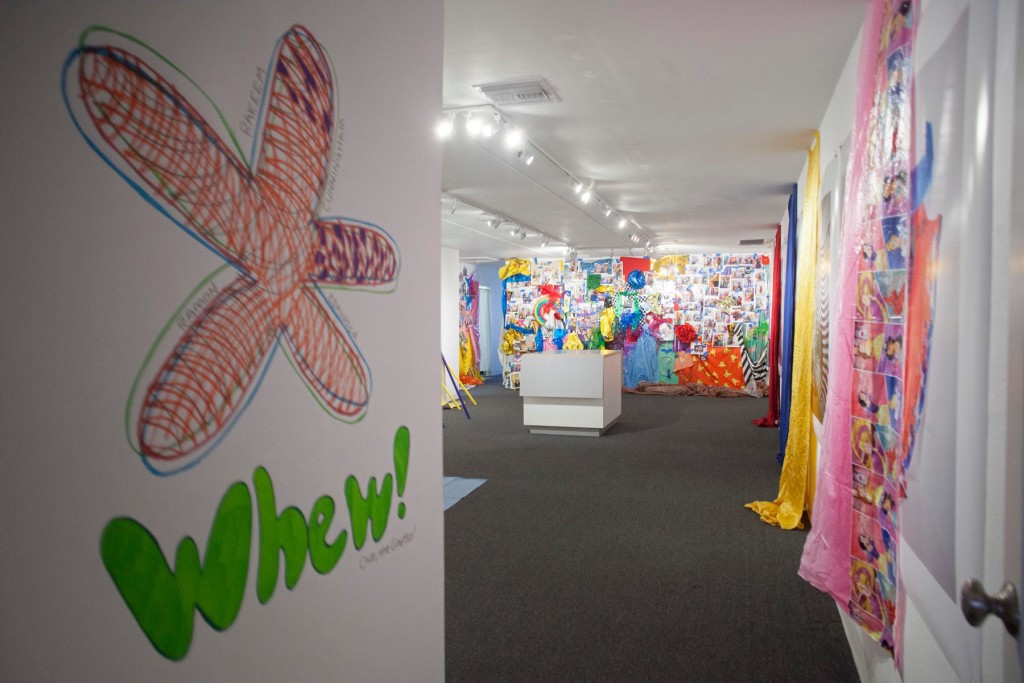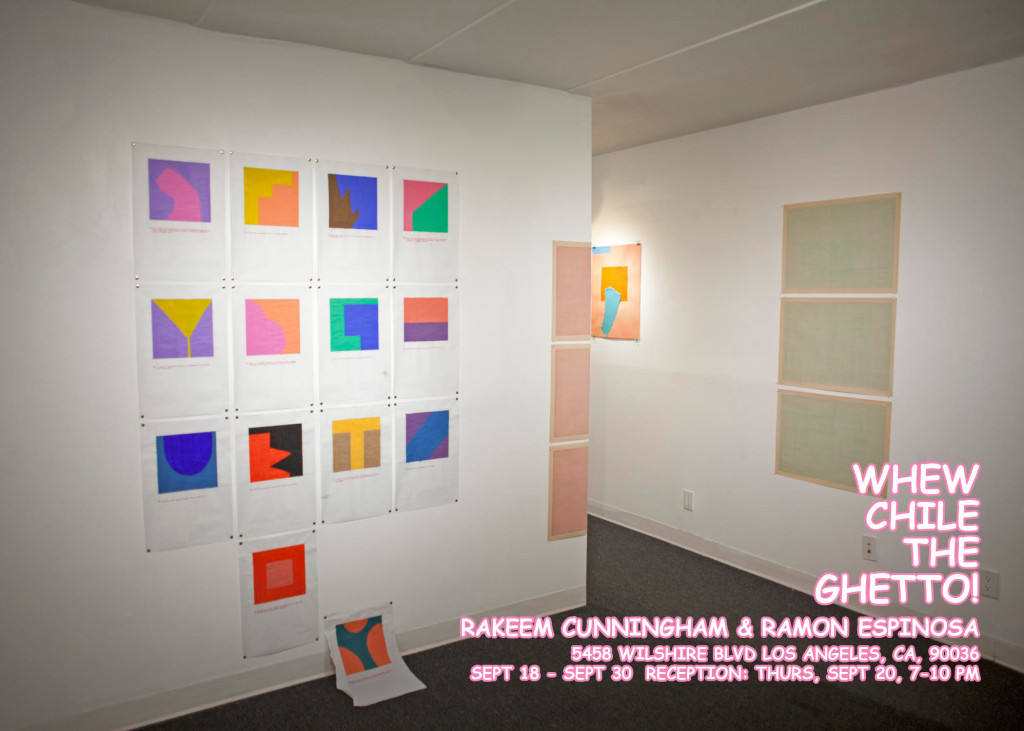Los Angeles-based artists Rakeem Cunningham and Ramon Espinosa created a cutting edge series of photographic works, installation, and mixed media last month in their Whew Chile the Ghetto, exhibited in TAG Gallery’s loft space. The space was given to Cunningham – who works as a gallerist at TAG – with no restrictions from gallery’s board. Free to shape a true passion project, together the two created an immersive and fresh look at queer, non-white bodies and viewers interactions with them, and all art.
It sounds like a lot to take on, but the pair shaped a riveting, memorable exhibition literally packed with color, life, and emotion.
The show’s title comes from a much-memed video clip of Nene Leakes walking through the streets of Atlanta while saying “Whew chile! The ghetto!” The phrase has been adapted as a response to a wide range of experiences by younger people of color – and here, by Cunningham and Espinosa to shape the frustration of being a queer person of color in the art world, and their ghettoization within that world.
The result: a vibrant, layered, series of images that sinks in slowly for the viewer and then lingers with a resonant impact. And – a show that’s bright, absorbing, and richly entertaining, too.
Cunningham relates “The overall idea for this exhibition was exploring the humanity in queer bodies, and in my case, a queer, black body. I really wanted to take the concept and the idea of ‘the ghetto,’ as this space that is actually something to be admired and honored. I grew up in Sylmar and Pacoima in the San Fernando Valley, and these aren’t areas that have art galleries around. The population is largely black and latinx peoples and I wanted to focus in and take what makes that place and ‘the ghetto’ special, and create images and work to uplift that.”
He adds that once Espinosa came on board, the project expanded to “taking a look at how the art world really condemns and looks down on these spaces. We wanted to uplift the space and our queer family in a way that felt genuine to us, but also allowed us to vent out frustrations with how we’ve been treated in navigating the art world. I can’t tell you how many times I’ve seen people not take the time to learn how to pronounce the names of artists of color or spell them wrong in emails. I’ve seen black artists work be called ‘primitive,’ and I’ve had my work be downplayed because of where I’m from, or because I didn’t grow up with an arts education. I wanted to say f*&k all of that, and honor and do what I know and love.”
The vibrant colors and layered look of the exhibition added to the intensity of emotion that the subjects conveyed for the artists. The show was Cunningham’s first in LA, but undoubtedly not his last. “I wanted it to pay homage to my past and present in order to look towards the future,” he asserts.
Cunningham says he hesitates to tell people what to take away from the show, but he does want viewers to start thinking about who the gatekeepers are for what is considered “‘art with a capital a,’ and how that history has excluded queer artists like myself and Ramon. How that history has excluded black artists, women artists, trans artists, and honestly art from any group that doesn’t fit in the ‘main historical art canon,’ and how that affects marginalized groups.”
In short, those hearing – and seeing – his artistic voice should consider why they haven’t heard it before.
The artist and curator also asked viewers to consider the value of certain art objects and precisely why some are held in “high esteem.” He wanted the exhibition to allow for the questioning of institutions, life, relationships, and the idea of creating a space in places that artists have contributed to yet felt excluded from.
Asked his favorite work in the exhibition, Cunningham cites the installation he positioned on the farthest wall of the loft space. Indeed its layers are rich and varied, and viewers could easily, in a good way, get lost in the dynamics of it. It successfully creates a full world, and a riveting one.
“Installation is a new avenue for me,” he notes, describing the end result as “really getting to see a half used tub of Vaseline juxtaposed next to a copy of Final Fantasy, next to a photograph that took 45 minutes to setup and take – and that’s next to a picture of me on my old basketball team – and the connections go on and on,” he asserts. “There’s literally so much going on that you have to sit with it for a good while to notice certain things. And there’s even things that viewers have pointed out to me that I might not have noticed myself.”
Cunningham refers to the piece as being a “shrine-like clusterf*&k of materials.” He says he loves it because “it’s so messy, like myself. I also really loved Ramon’s work, especially the series of pieces titled to prop because it’s this cheeky response to people saying his work is so precious and needs to be framed,” he explains. “So he literally just painted wood and propped it up as a ‘frame.’ And on top of that, they’re placed in a part of the room where it’s easy to trip over them,” Cunningham laughs. “During the reception a friend of ours got drunk and knocked it over, and we both laughed so hard, because we love work that messes with the viewer.”
- Genie Davis; photos provided by Rakeem Cunningham



